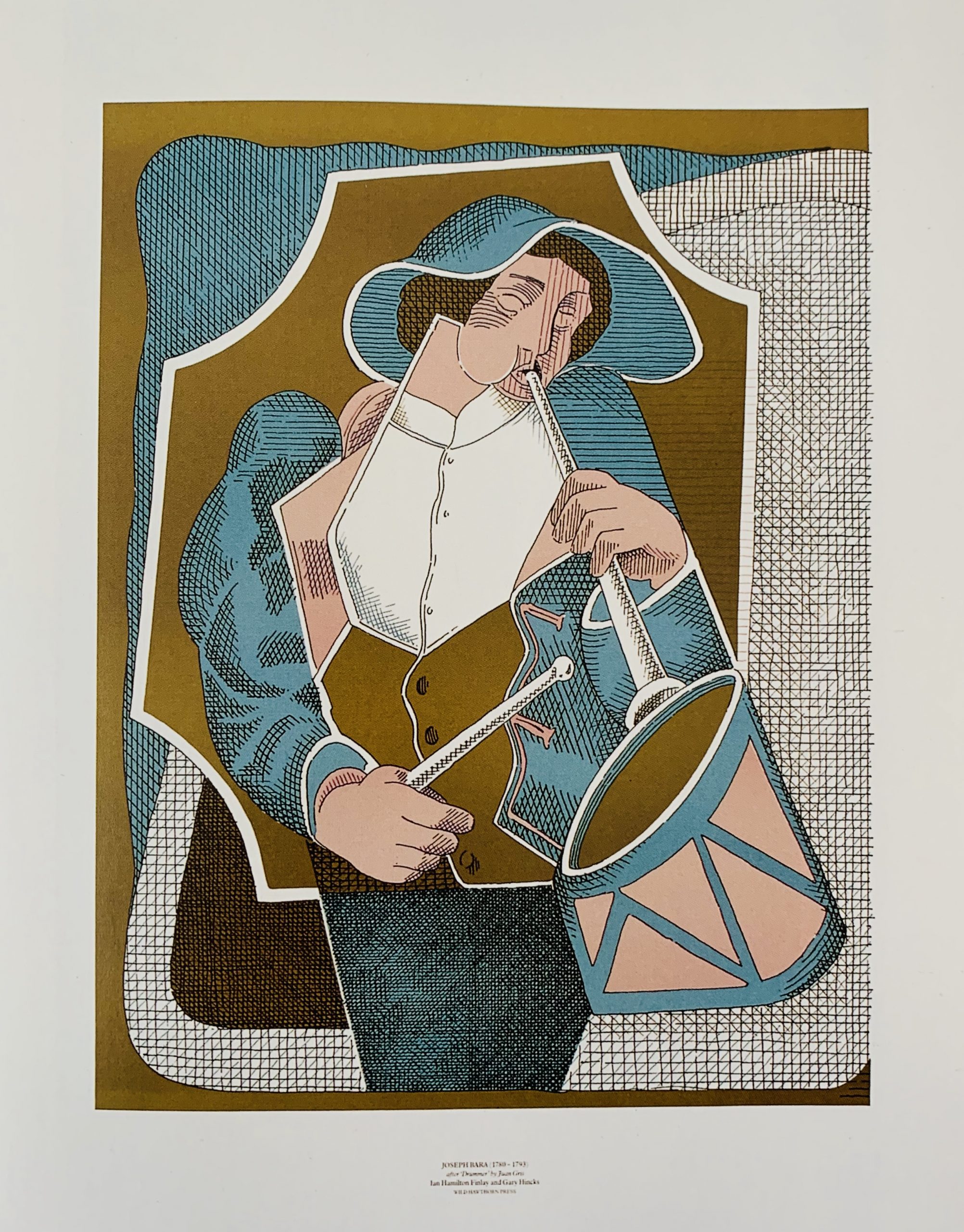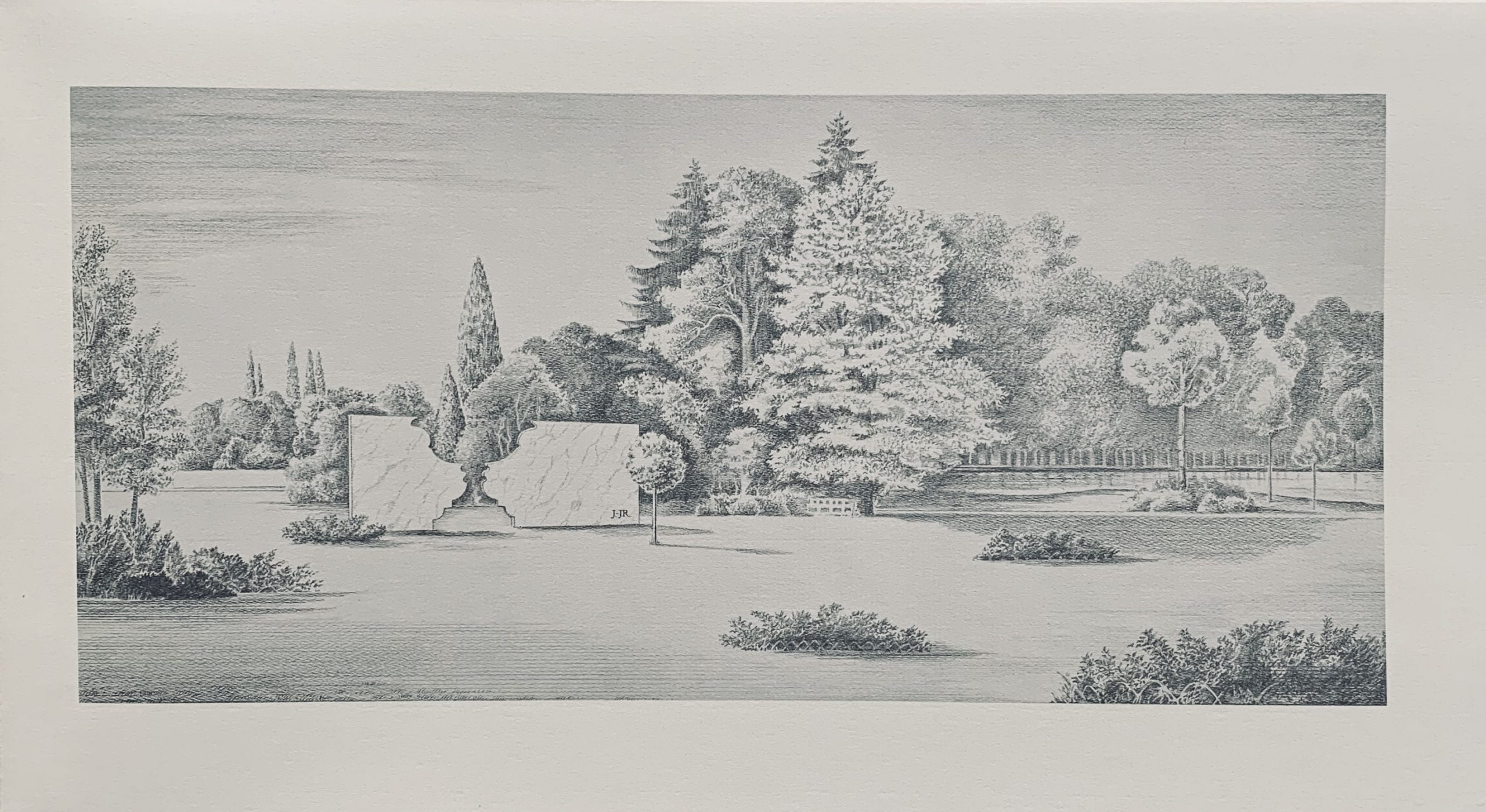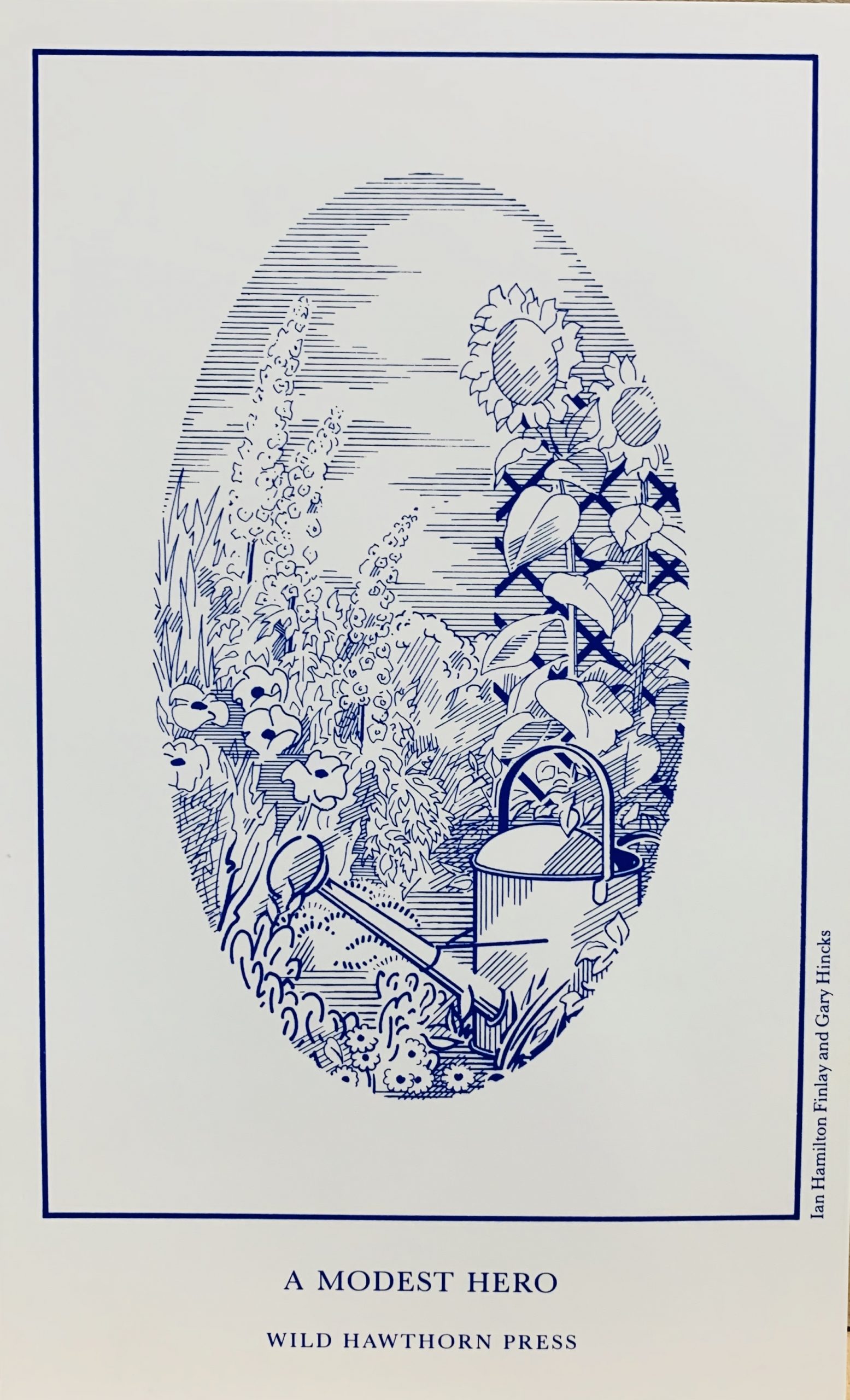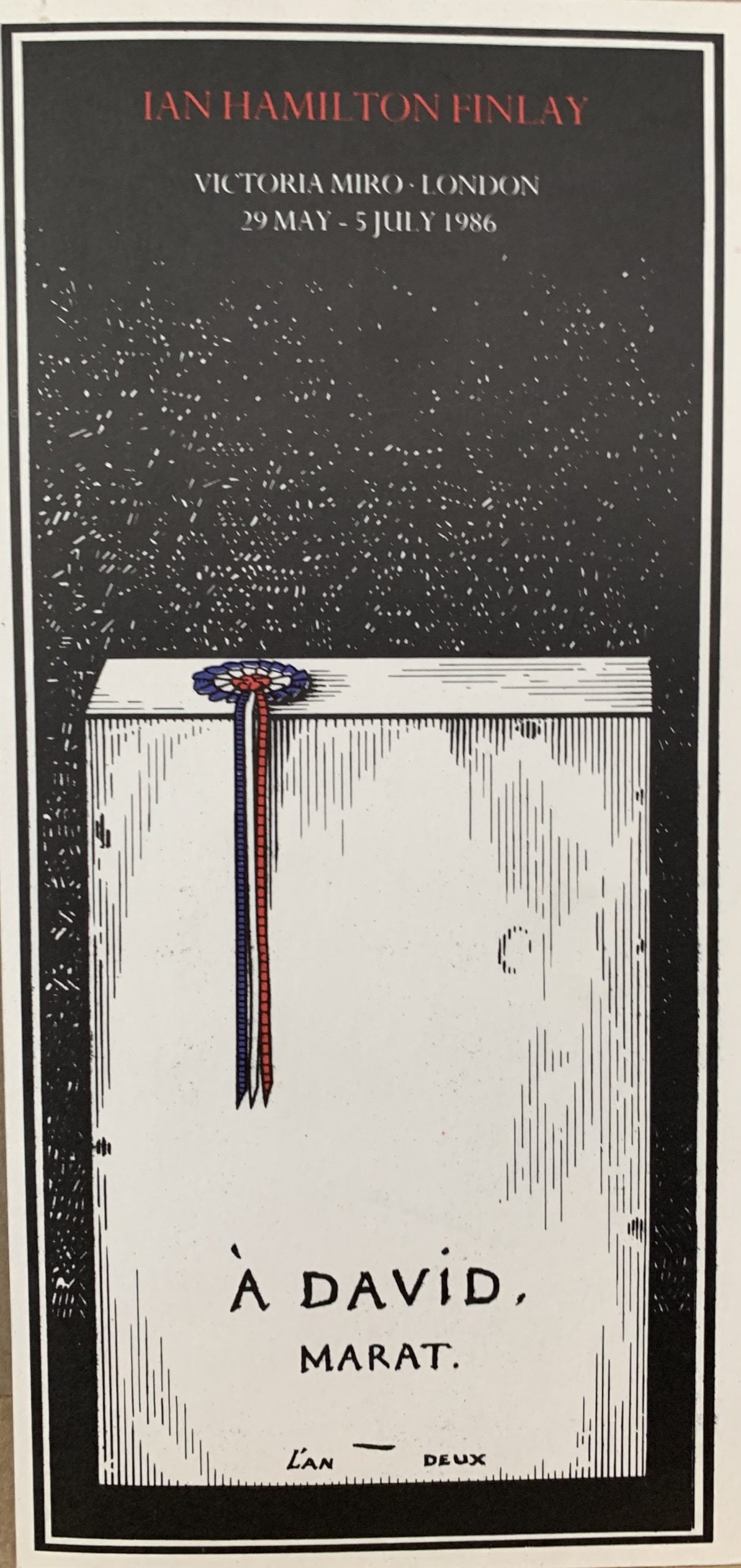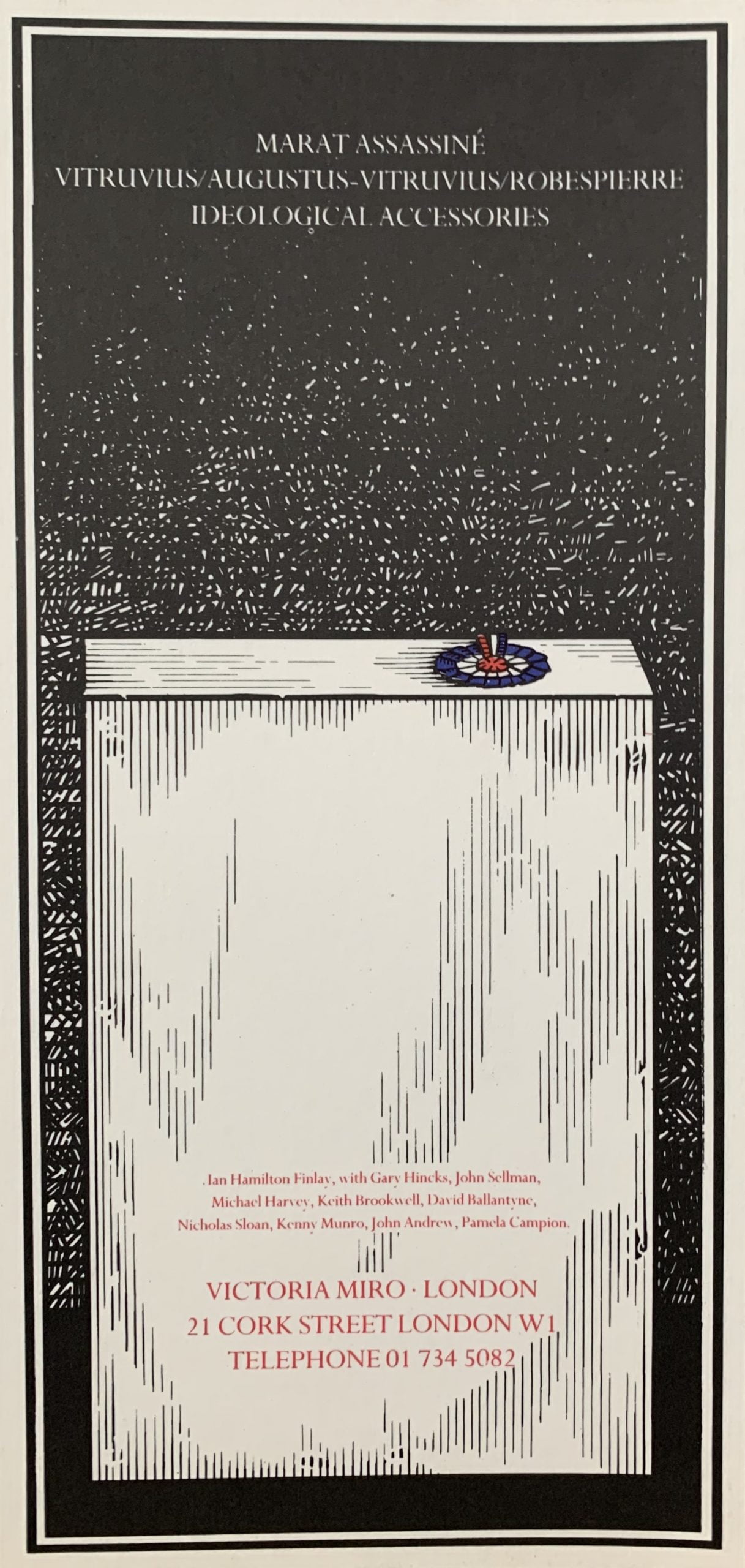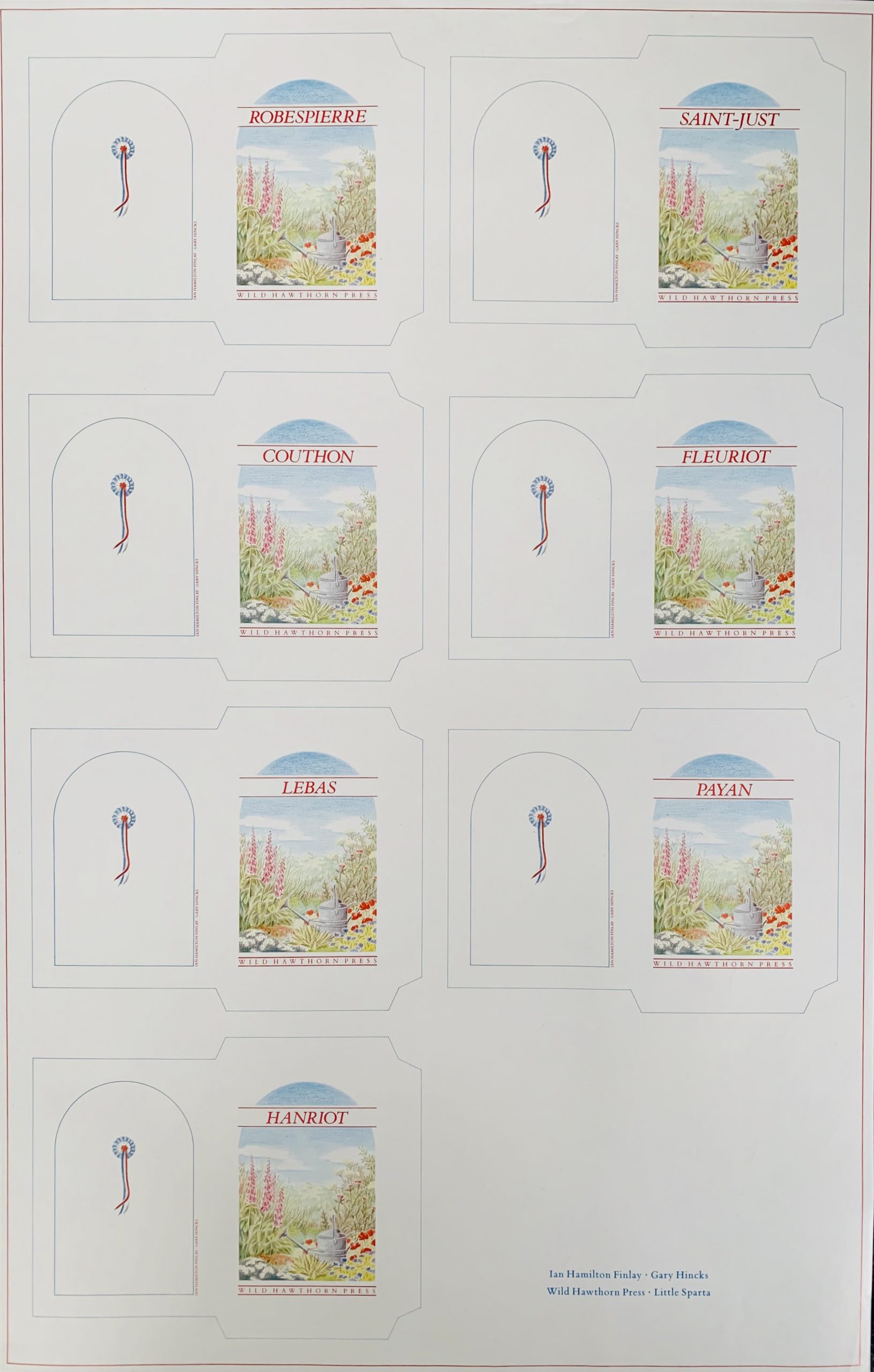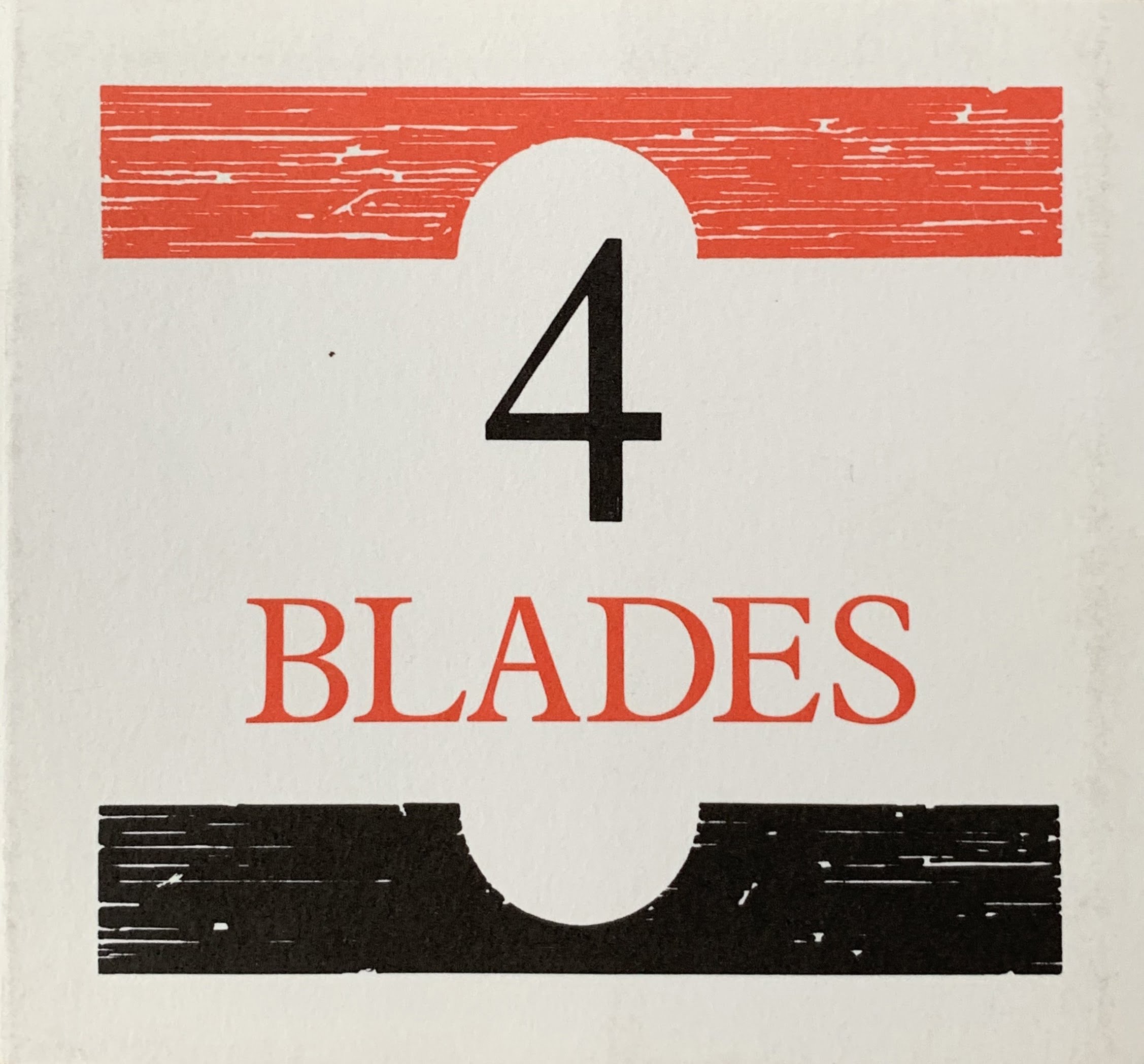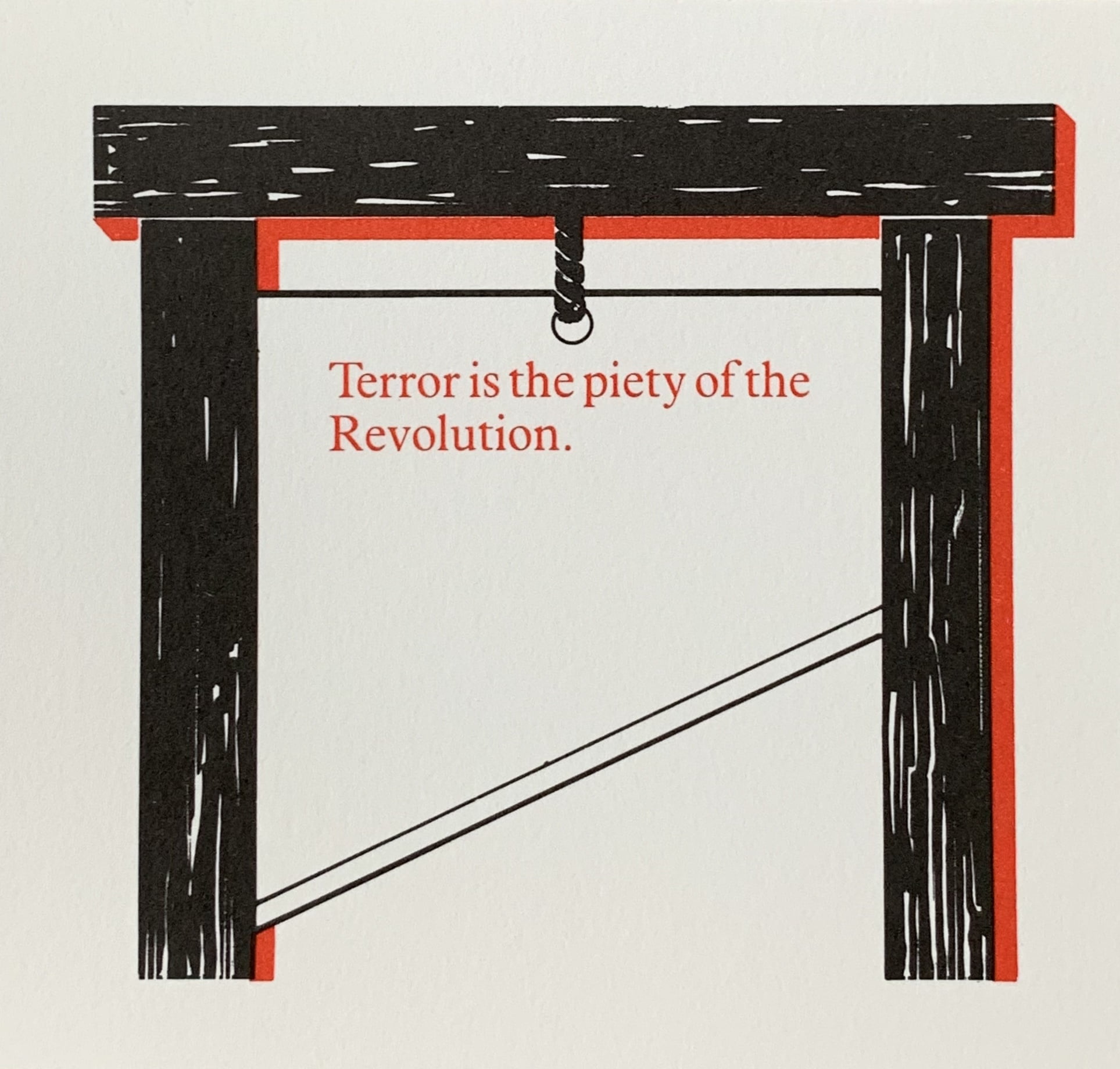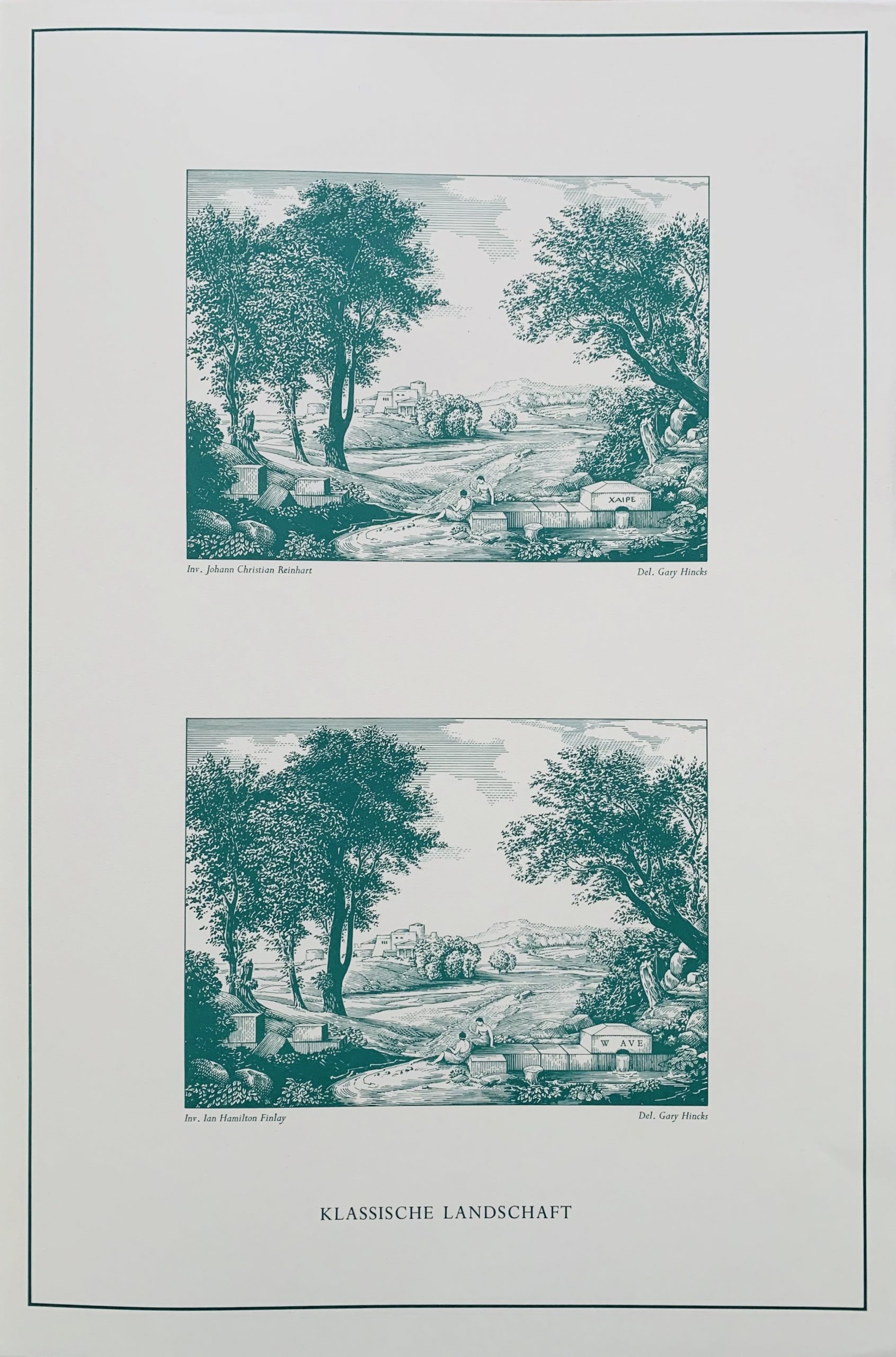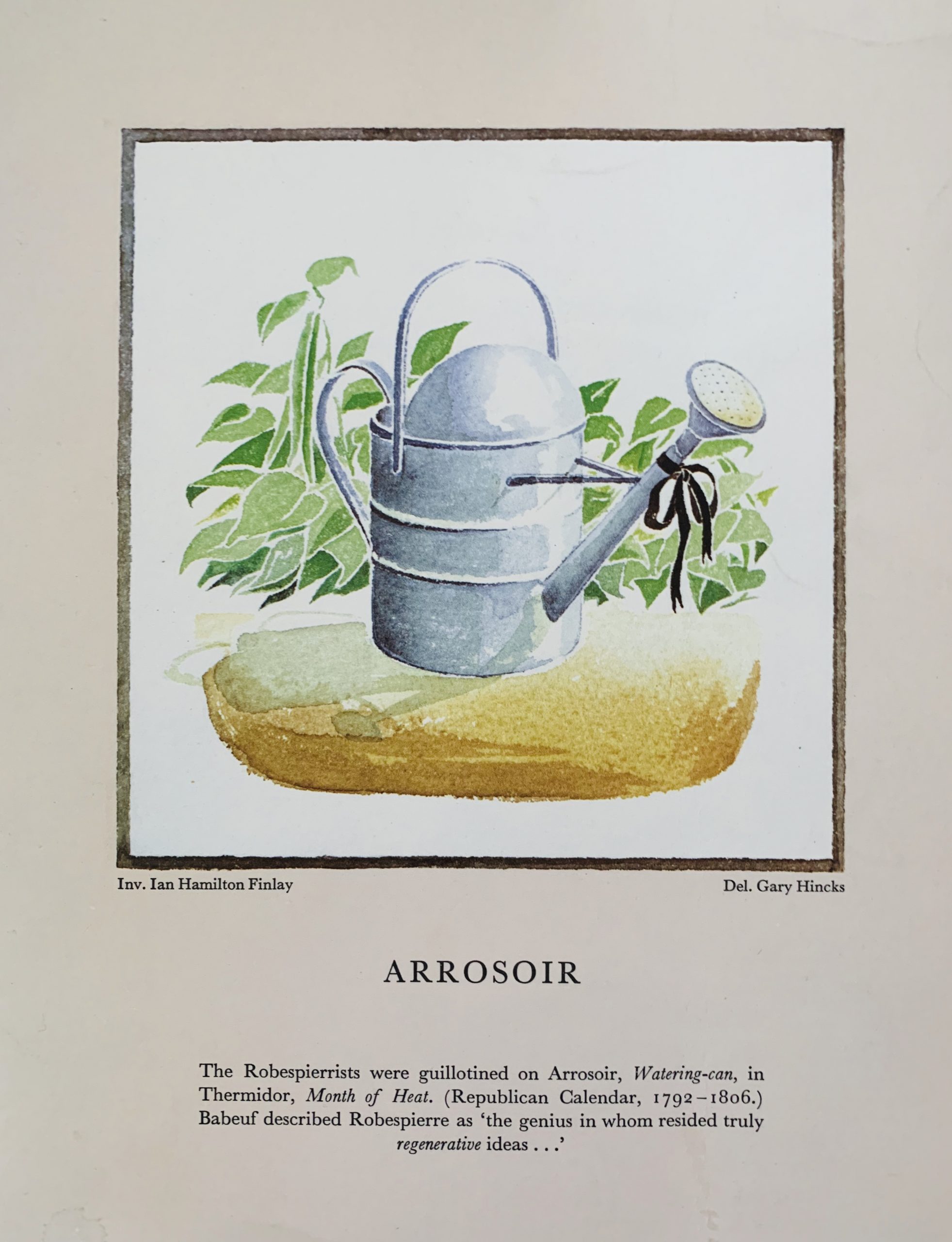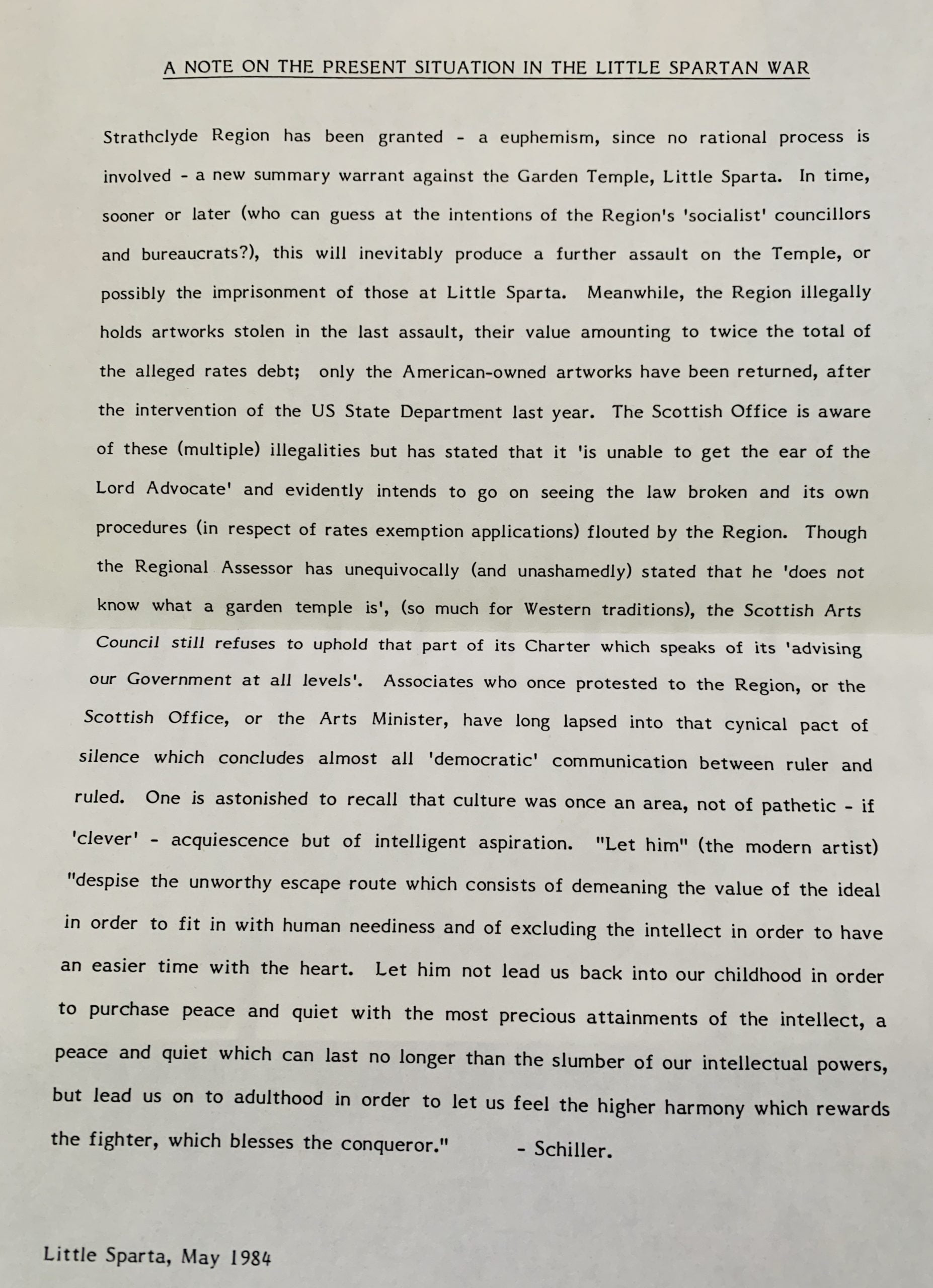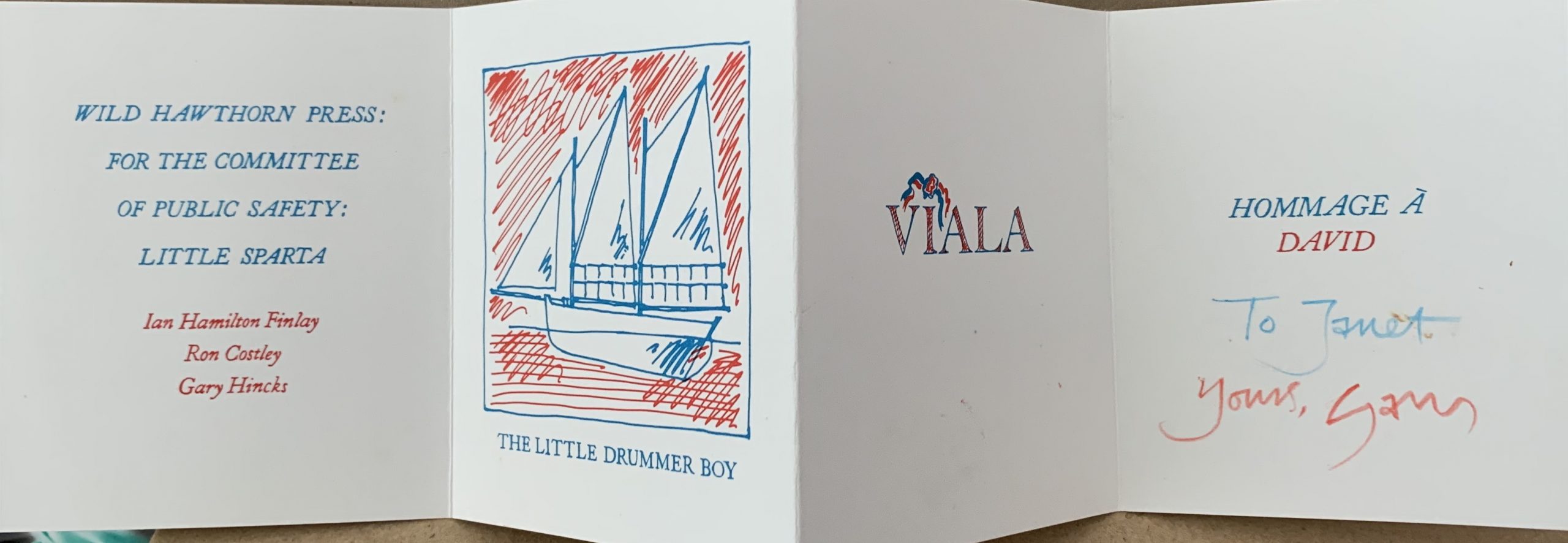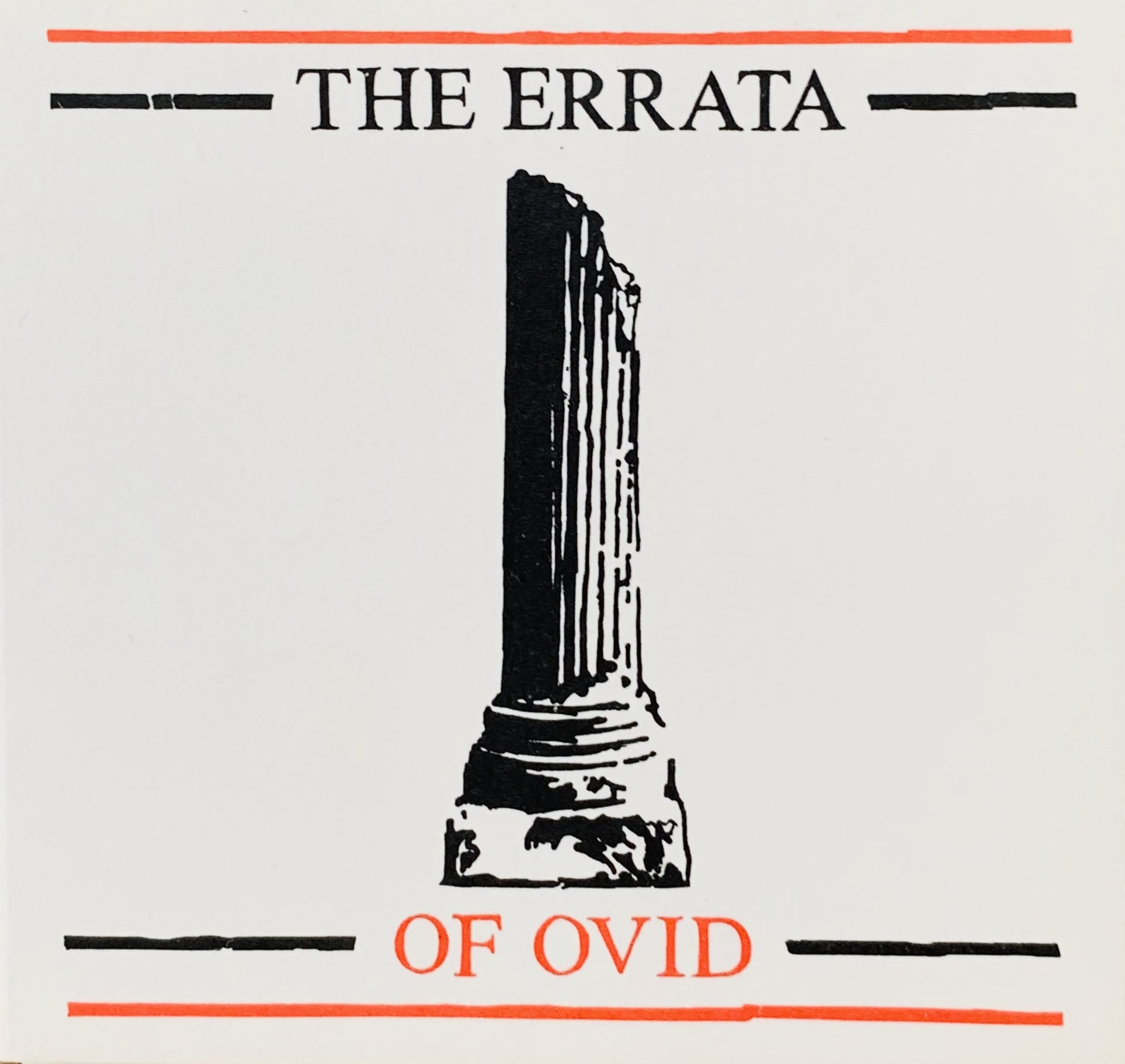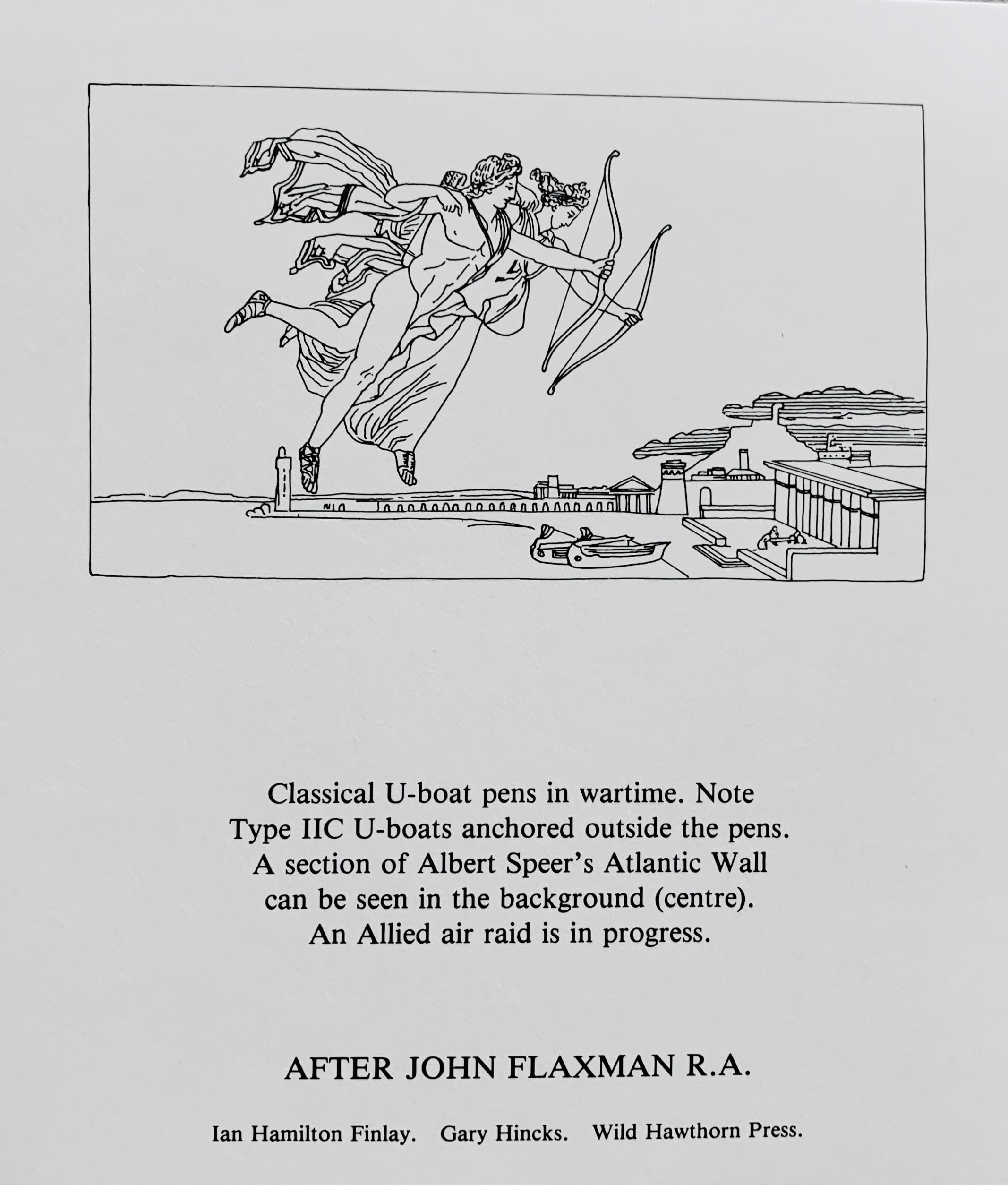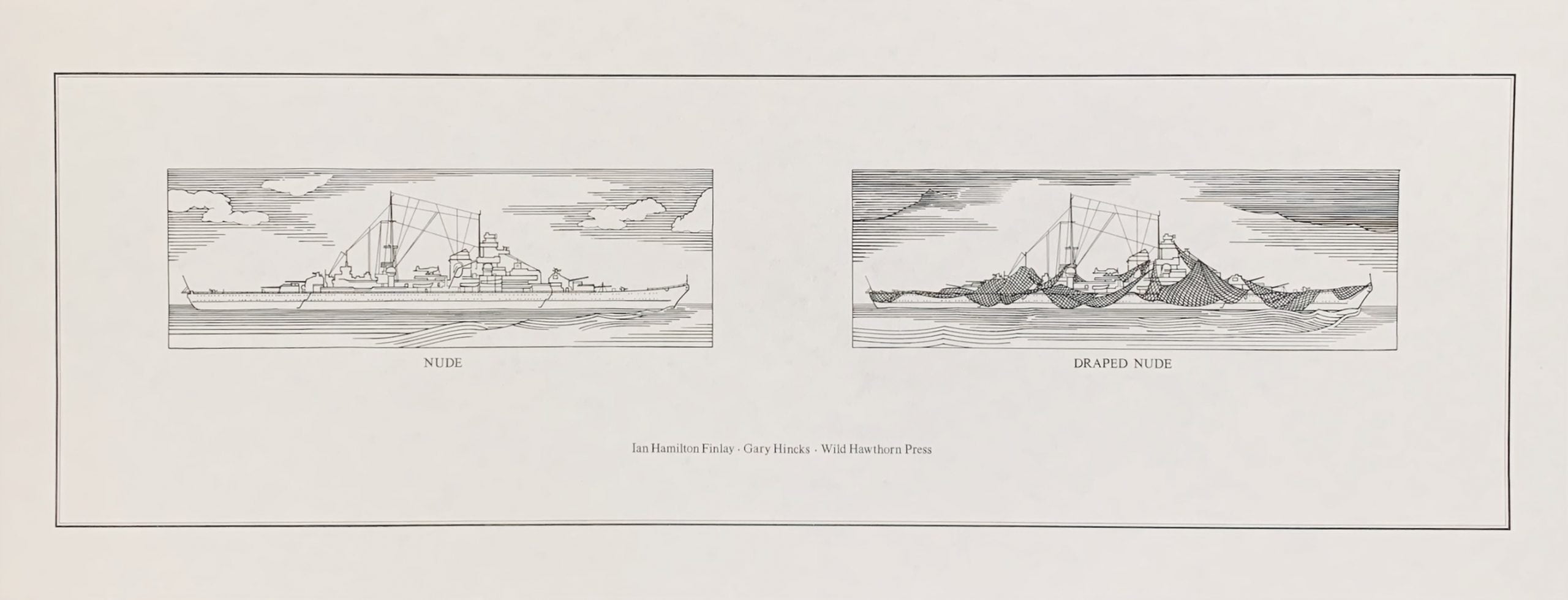24 Feb JOSEPH BARA AFTER GRIS. 1987.
Little Sparta: Wild Hawthorn Press, 1987
77.0 x 62.5cm, full colour offset lithograph on paper. The reproduced painting by Hincks is based on a 1925 cubist painting by Juan Gris called Drummer. In place of Gris' adult, Finlay had Hincks turn the figure into the martyred "little drummer boy" Bara who died in the revolutionary war against the reactionary uprising in the Vendee. Here Hinck's recreation of the work is lighter and more classical in touch - even more heroic.
The image we have used here is from a publication - the print we hold is framed in wood and glass and hard to image without reflections - but the work is in VG+ condition.
...

